Those engaged in the native versus non-native debate should perhaps avoid becoming too polarised. While some non-native plant species certainly have proven highly invasive and damaging to native habitat, the impact of the vast majority appears to be (so far at least) relatively benign. Indeed, many non-native species can be beneficial for native wildlife and provide other functions.
The relatively high prevalence of non-native species is a key defining feature of urban floras (McKinney, 2006). Non-native plants are valued in residential gardens and urban parks for various reasons including colour and foliage qualities, flower size, culinary and cultural attributes, and sometimes also as discussed here, their value to wildlife. However, in seeking to maximize biodiversity value, there appears to be growing momentum behind selecting native over non-native plant species when designing both public greenspaces and residential gardens (McKinney, 2006; Hulme et al., 2018). In favouring native species, it is also argued that various potential adverse impacts associated with non-native planting can be avoided. In this respect, the harmful effects resulting from the introduction of non-native species that then become invasive is claimed to be one of the most significant threats to global biodiversity (IUCN 2000; Simberloff, 2015). The IUCN further asserts that urban centres and ornamental horticulture are principal pathways for the introduction and spread of invasive plant species (Ham et al., 2013).
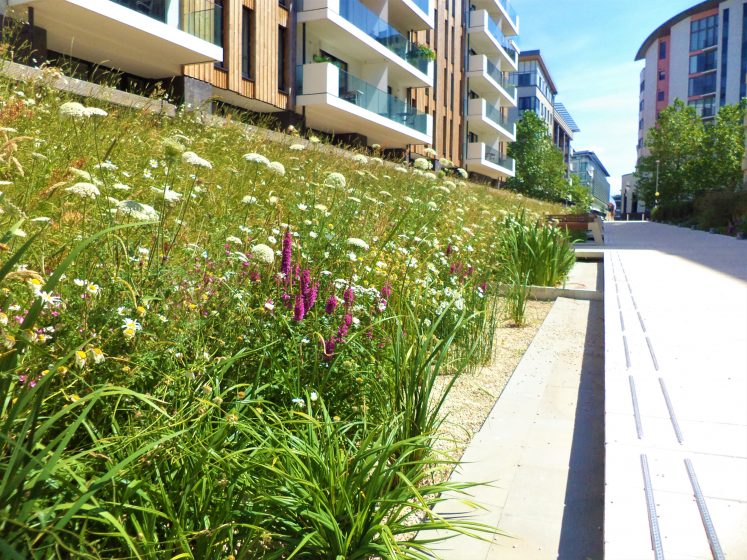
Nevertheless, a scepticism about the scale of this impact has been simmering for some time, and quite recently has been emphatically reemphasised by a relatively small but vocal element (Hobbs et al., 2009; Davis et al., 2011; Luscombe & Scott, 2011; Pearce, 2015). In their opinion, long-established place-based management approaches that focus on maintaining historical floral and faunal assemblages need to change. They contend there should be greater recognition of emerging “novel ecosystems”, often consisting of many non-native plant species, which better respond to climate change, as well as various environmental transformations occurring due to urbanization, including micro-climatic variation, compacted and contaminated soils, and altered drainage patterns. These commentators assert that the risks associated with non-native species are overstated, and that a more balanced approach is needed that embraces them alongside native species as an integral element of the urban landscape.
This article is concerned primarily with the pros and cons of native and non-native planting, specifically with respect to their biodiversity value within publicly accessible greenspaces (excluding large-scale urban habitat restoration projects) and residential gardens. The relationships that native and non-native plants have with pollinators and phytophagous insects is particularly emphasized. The former insect group is, inter alia, critical in providing pollination services, while the latter is crucial in conveying energy up the food chain to a multitude of birds, reptiles, amphibians and mammals.
It is recognized that landscape designers and gardeners aim to achieve many other goals when devising planting schemes, including providing aesthetic/visual interest, a sense of place, multicultural appeal, ground-cover, multi-seasonal colour, legibility, and ease of management. Discussion on these additional aims is abundant elsewhere in the literature and so is not discussed further here.
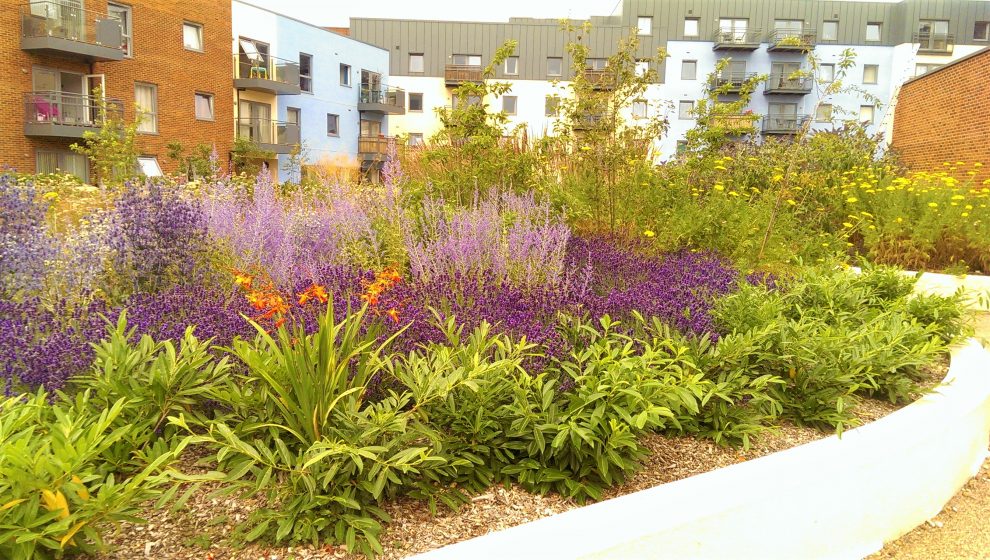
The case for native planting
Opportunities for native insect fauna
It is frequently claimed that native plants generally support greater faunal diversity and biomass than non-native planting. For example, a US study by Burghardt et al. (2008) found that caterpillar and bird abundance and diversity was significantly higher in urban gardens with predominantly native planting compared with gardens dominated by non-native planting. Many birds of course rely on caterpillars for feeding their nestlings.
The apparent preference of native fauna for native flora is often explained by their long history of association, the two having coevolved over millennia. While plants have evolved a variety of physical and chemical means to defend themselves against attack by insects (and other species), those insects that have co-evolved with them are believed to be much more likely to have the specialized behavioural and physiological adaptations to overcome these defensive barriers, allowing them to consume, grow and reproduce on their host plants (Tallamy, 2004).
While both a greater diversity and abundance of herbivorous insects are generally considered beneficial from an ecological perspective because of their importance in the food web, many people, if not most, appear to consider such species as pests, revealing an awkward philosophical contradiction in wildlife gardening. Unlike plant-devouring insects, however, pollinators appear universally cherished (although some species can both pollinate and consume plants dependent on their life-stage). A number of studies have found a negative association between the degree of urbanization and both pollinator abundance and species richness (Hernandez et al., 2009). While the high coverage of impervious surfaces in urban areas is important in explaining such relationships, it is also suggested that the high proportion of non-native species might also be a key contributing factor.
While a co-evolutionary explanation may again partly explain the apparent differences in pollinator preference between native and non-native plant species, the degree of horticultural modification of the latter might also be important, as selective breeding can result in reductions in floral reward or changes to flower structure that inhibits pollinator access (Comba et al., 1999). For example, the double-flowered trait constrains access for insects to pollen-bearing centre parts, and in some cases is produced at the expense of reproductive floral components such as anthers or carpels.
Invasion by non-native flora at the expense of native flora
The close relationship between native plants and co-evolved herbivorous insects is believed to partly explain the “invasion paradox”. This is the ability of exotic plants to colonize and spread more readily than native species, contrary to intuition that would suggest that native species would be better adapted to local conditions. Certain alien plants are believed to proliferate in their new environments partly because they have become unshackled from coevolved herbivores and other natural enemies—the so called “enemy release hypothesis” (Tallamy, 2004).
An additional factor that might cause non-native species to spread beyond their intended confines relates to the reduced competition that they face from native species in urban sites that have experienced high levels of anthropogenic disturbance, such as brownfield sites (previously developed land that is not currently in use), and along transport corridors and watercourses (McKinney, 2006). The disturbed early successional conditions found in such sites are often highly unrepresentative of those occurring across the wider landscape and thus may be inhospitable to many localized native species and communities (hardy native ruderals being an exception).
It has also been suggested that the ‘high performance’ traits of invasive non-native plant species, which for example relate to physiology, various size characteristics, growth rate, fecundity and adaptiveness, confers an advantage over many native species, thereby helping them to rapidly colonize such environments (Jauni et al., 2015). Plant breeders may have specifically selected for such traits in many invasive ornamental species to facilitate ease of cultivation.
In spite of such processes seemingly favouring the spread of non-native plants, Williamson (1996) has estimated that only 1% of alien plant species are self-sustaining outside of cultivation, while only 0.1% can be considered invasive. However, such estimates have not gone unchallenged. Certainly, where non-native species do become invasive, they have potential to dramatically transform native biodiversity, many examples of which are provided by Ham et al. (2013). Simberloff (2015) also argues that because modern invasion biology is still in its infancy, many non-native species have yet to be studied in detail and therefore it is premature to assume their effects are only benign, particularly as global warming unshackles species that are currently being contained by climatic limits.
Biological Homogenization
The proliferation of invasive non-natives is also said to be causing ‘biological homogenization’, i.e. the same urban-adapted plants are becoming progressively dominant in towns and cities across the world (McKinney, 2006). The high number of invasive species shared between cities is in part related to people’s shared preferences for particular ornamental species. While an influx of non-native plant species may diversify local biodiversity, global biodiversity is said to be reduced by these species as they outcompete more uncommon localized plant species.
Native plantings can be effective analogues of more valuable semi-natural or natural habitats
While most wildlife gardeners face spatial constraints, park managers have more opportunity to establish native plant species together in large numbers to form recognizable native plant communities, thereby contributing to local biodiversity strategies (Plate 1). While complicated large-scale urban ecological engineering projects are not discussed here, it is relevant to reference the opportunities for smaller-scale native habitat analogues that can be achieved relatively easily. In the UK two-thirds of publicly-managed urban green infrastructure consists of amenity grassland, i.e. regularly mown (virtual monoculture) grassland (Forestry Research, 2006), while in Chicago in the US, amenity grassland (or “turf grass” as Americans refer to it) covers 21% of the city (Davis et al., 2017). In many cases, relatively substantial areas of amenity grassland have potential for conversion to native wildflower meadow (or other native habitat types) without unduly compromising sporting and other amenity interests, which in turn has been shown to increase the abundance and diversity of pollinating insects (Garbuzov et al., 2015).
The case for non-native planting
Enhanced opportunities for insects
Influenced by the various studies discussed above, the consensus in invasion biology and ecological thinking more generally, has been that non-native species are generally harmful, impoverishing biodiversity and even upsetting the benign “balance of nature”. As with a great many things, consideration of the research in its entirety actually reveals a more nuanced picture, with some research challenging ecological orthodoxy regarding the relative ecological benefits of native and non-native planting, and also the underlying causes behind the patterns.
Studies suggesting a negative relationship between the abundance of non-native plant species and the prevalence and diversity of pollinating insects are often based on a limited sample of plants and certainly do not tell the whole story. There are thousands of plant varieties available to landscape designers, a large number of which are not double-flowered and are in some cases rich in pollen and nectar, and thus highly beneficial to insects (Garbuzov & Ratnieks, 2014) (Plate 2). Indeed, in the UK the Royal Horticultural Society operates the “Perfect for Pollinators” certification scheme, championing wildlife friendly cultivars on sale in plant nurseries.
Some studies have found that certain non-native planting can actually attract a greater abundance of pollinators than many native species (Morales & Traveset, 2009; Matteson & Langellotto, 2011). It is even suggested that some non-native plants may be too effective at attracting pollinating insects, reducing visitations to native plant species and thereby threatening their reproductive success (Bjerknes et al., 2007).
The success of some ornamental plantings might partly be explained by the fact that many species have been selectively bred to have extended flowering periods and large flowers, features that are associated with increased nectar and pollen production (Matteson & Langellotto, 2011). Possibly due to these enhanced qualities, some studies are suggesting that bee species-richness might actually be higher across urban areas compared with neighbouring countryside (Baldock et al., 2015). In adjoining intensively farmed rural landscapes, crop species are only in bloom for a limited period, many trees and hedgerows have been removed, and herbicides have greatly reduced the abundance of wildflowers.
Such urban/rural comparisons of species richness can depend heavily on the specific nature of the sites being compared. Certainly, brownfield sites that are often rich in non-native species, can help sustain a high-level of biodiversity, clearly surpassing that of many neighbouring farmland areas. In the longer term such novel ecosystems can also set the stage for ecological recovery, helping to gradually repair degraded soils and ultimately lead to the re-establishment of more recognizable native habitats (Ewel & Putz 2004; Pearce, 2015). Pearce (2015) further contends that non-natives generally do not compete with or displace native species from established habitats but instead fill empty niches in disturbed environments that may be unsuited for colonization by localized native species and/or communities.
Other research from the UK is indicating that there is little difference in pollinator abundance between native and near-native plant mixes, which is perhaps unsurprising given that many of the UK’s native pollinators are also present on the European continent, and so will have coevolved with and readily identify many near-native plant species as a feeding resource (Salisbury et al., 2015; Brodie et al., 2017). Smith et al. (2006) suggests that a much larger proportion of native phytophagous insects could be utilizing non-native plants as hosts than previously recognized for the same reason.
Climate change adaptation, disproportionate cost, low extinction risk and risk of botanical xenophobia
Those objecting to the focus on ‘nativeness’ further assert that: non-natives could be nature’s saviour as climate change renders conditions unsuitable for many native species; that estimated eradication and confinement costs for non-natives are greatly exaggerated and that such programmes are sometimes unjustified; non-natives generally pose a negligible risk of native species extinction (island populations being the main exception); and the militaristic style of language used in describing non-native species, e.g. as ‘alien invaders’, is non-scientific, pejorative and even xenophobic. All of these additional objections are in themselves sizeable topics for debate and so readers are directed to Davis et al. (2011), Luscombe & Scott (2011), Pearce (2015) and Thomas & Palmer (2015) for further discussion, but also to Simberloff & Strong (2013) and Simberloff (2015) for robust counter arguments.
Conclusions
When designing greenspaces to enhance biodiversity, a key consideration relates to plant species selection and the particular mix of native and non-native species. This article has focussed on the respective values of native or non-native plants to insects, which perform various critical ecosystem functions, including pollination and providing a primary food source for other taxa. While some of the evidence is contradictory and there are confounding factors, on balance a preference for native species in planting schemes is likely to achieve the greatest benefit for biodiversity. Large scale planting (or seeding) of native species into recognizable communities can also create impressive habitat analogues that can make important contributions to biodiversity targets.
Moreover, some non-native plant species have proven highly invasive and damaging to native habitat, and so care must always be taken to assess invasion risk when designing planting schemes, especially when adjoining habitat is closer to natural than semi-natural, or next to river corridors.
However, those engaged in the native versus non-native debate should perhaps avoid becoming too polarised. It should also be acknowledged that a great many non-native species are also valuable for wildlife and provide other functions. The vast majority of ornamental plants appear, so far at least, to have had little negative ecological impact, and where they have spread it is frequently as opportunists, filling gaps in disturbed environments unsuited to many local species and/or communities. Often novel environments such as brownfield sites, including heady mixtures of both native and non-native ruderal species, can develop into rich and valued havens for native fauna.
While there are many opportunities for including more native plants and communities in urban planting schemes, some pragmatism is also required amongst conservationists, recognizing that unadulterated native habitat creation is not always optimal in many urban contexts. Non-native plant species will have a continued role to play in planting schemes, bringing vibrancy and joy, and sometimes also considerable value to native fauna.
Lincoln Garland
Bath
This article is an abridged version of a chapter included in Routledge’s forthcoming Handbook of Urban Ecology. [Douglas, I; P. Anderson; D. Goode; M.C. Houck; D. Maddox; Harini Nagendra; and T.P. Yok (Editors). 2020. Handbook of Urban Ecology, 2nd Edition. Abingdon: Routledge Press. In press.]
References
Baldock, K.C.R., Goddard, M.A., Hicks, D.M., Kunin, W.E., Mitschunas, N., Osgathorpe, L.M., Potts, S.G., Robertson, K.M., Scott, A.V., Stone, G.N., Vaughan, I.P. & Memmott, J. (2015). ‘Where is the UK’s pollinator biodiversity? The importance of urban areas for flower-visiting insects’, Proceedings of the Royal Society of London B: Biological Sciences, 282: 20142849
Bjerknes, A., Totland, Ø, Hegland, S.J. & Nielsen, A. (2007). ‘Do alien plant invasions really affect pollination success in native plant species?’ Biological Conservation, 138: 1–12.
Brodie, J., Hitchmough, J. & Livingstone, M. (2017). ‘Planting for pollinators’, Landscape: The Journal of the Landscape Institute, Summer 2017: 45-51.
Comba, L., Corbet, S.A., Barron, A., Bird, A., Collinge, S., Miyazaki, N. & Powell, M. (1999). Garden flowers: insect visits and the floral reward of horticulturally-modified variants’, Annals of Botany, 83: 73–86.
Davis, A.Y., Lonsdorf, E.V., Shierk, C.R., Matteson, K.C., Taylor, J.R., Lovell, S.T. & Minor, E.S. (2017). ‘Enhancing pollination supply in an urban ecosystem through landscape modifications’, Landscape and Urban Planning, 162: 157–66.
Davis, M.A. Chew, M.K., Hobbs, R.J., Lugo, A.E., Ewel, J.J., Vermeij, G.J., Brown, J.H., Rosenzweig, M.L., Gardener, M.R., Carroll, S.P., Thompson, K., Pickett, S.T.A., Stromberg, J.C., Del Tredici, P., Suding, K.N., Ehrenfeld, J.G., Grime, J.P., Mascar, J. & Briggs, J.C. (2011). ‘Don’t judge species on their origins’, Nature, 474: 153-4.
Forestry Research (2006). Grassland Habitats, Roslin: Forestry Research.
Garbuzov, M., Fensome, K.A. & Ratnieks, F.L.W. (2015). Public approval plus more wildlife: twin benefits of reduced mowing of amenity grass in a suburban public park in Saltdean, UK. Insect Conservation Diversity, 8: 107–119.
Garbuzov, M. & Ratnieks, F.L.W. (2014). ‘Quantifying variation among garden plants in attractiveness to bees and other flower-visiting insects’ Functional Ecology, 28: 364–74.
Ham, C.V., Genovesi, P. & Scalera, R. (2013). Invasive Alien Species – The Urban Dimension: Case Studies on Strengthening Local Action in Europe, Brussels: IUCN European Union Representative Office.
Hernandez, J.L., Frankie, G.W. & Thorp, R.W. (2009). ‘Ecology of urban bees: a review of current knowledge and directions for future study’, Cities and the Environment, 2: Article 3.
Hobbs, R.J., Higgs, E. & Harris, J.A. (2009). ‘Novel ecosystems: implications for conservation and restoration’, Trends in Ecological Evolution, 24: 599-605.
Hulme, P.E., Brundu, G., Carboni, M., Dehnen‐Schmutz, K., Dullinger, S., Early, R., Essl, F., González‐Moreno.P., Groom, Q.J., Kueffer. C., Kühn, I., Maurel, N., Novoa, N., Pergl, J., Pyšek, P., Seebens, H., Tanner.R., Touza, J.M., van Kleunen, M. & Verbrugge, L.N.H. (2018). ‘Integrating invasive species policies across ornamental horticulture supply chains to prevent plant invasions’, Journal of Applied Ecology, 55: 92–8.
IUCN (2000). IUCN Guidelines for the Prevention of Biodiversity Loss Caused by Alien Invasive Species, Gland: IUCN.
Jauni, M., Gripenberg, S. & Ramula, S. (2015). ‘Non-native plant species benefit from disturbance: a meta-analysis’, Oikos, 124: 122–9.
Luscombe, G. & Scott, R. (2011). ‘Creative conservation’ in I. Douglas, D. Goode, M.C. Houck and R. Wang (eds) The Routledge Handbook of Urban Ecology, London: Routledge, 221-32.
Matteson, K.C. & Langellotto, G.A. (2011). ‘Small scale additions of native plants fail to increase beneficial insect richness in urban gardens’, Insect Conservation Diversity, 4: 89–98.
McKinney, M.L. (2006). ‘Urbanization as a major cause of biotic homogenization’, Biological Conservation, 127: 247–60.
Morales C.L. & Traveset, A. (2009). ‘A meta-analysis of impacts of alien vs. native plants on pollinator visitation and reproductive success of co-flowering native plants’, Ecology Letters, 12: 716–28.
Pearce, F. (2015). The New Wild: Why Invasive Species will be Nature’s Salvation. London: Icon Books.
Salisbury, A., Armitage, J., Bostock, H., Perry, J., Tatchell, M. & Thompson, K. (2015). ‘Enhancing gardens as habitats for flower-visiting aerial insects (pollinators): should we plant native or exotic species?’ Journal of Applied Ecology, 52, 1156–64.
Simberloff, D. (2015). Non-native Invasive Species and Novel Ecosystems, F1000Prime Reports, 7.
Simberloff, D. & Strong, D. (2013). ‘Counterpoint: scientists offer a dissenting view on Ascension Island’, Yale Environment 360, September 11.
Smith, R.M., Thompson, K., Hodgson, J.G., Warren, P.H. & Gaston, K.J. (2006). ‘Urban domestic gardens (IX): Composition and richness of the vascular plant flora, and implications for native biodiversity’, Biological Conservation, 129: 312–22.
Tallamy, D. (2004). ‘Do alien plants reduce insect biomass?’, Conservation Biology, 18: 1689–92.
Thomas, C.D. & Palmer, G. (2015). ‘Non-native plants add to the British flora without negative consequences for native diversity’, Proceedings of the National Academy of Sciences of the United States of America, 112: 4387–92.
Williamson, M., (1996). Biological Invasions. London: Chapman and Hall.


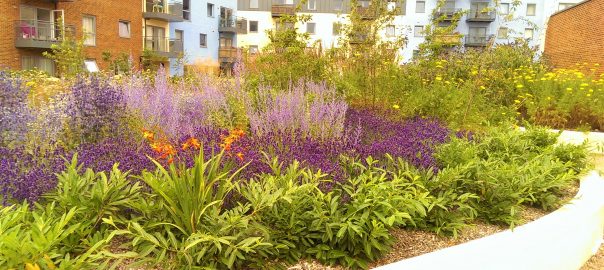
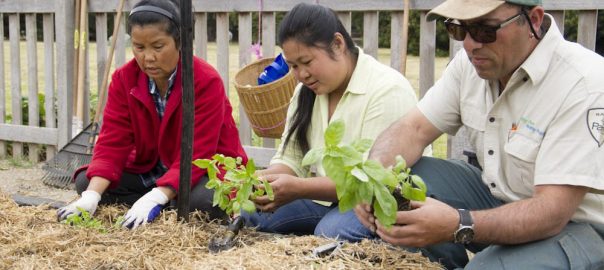
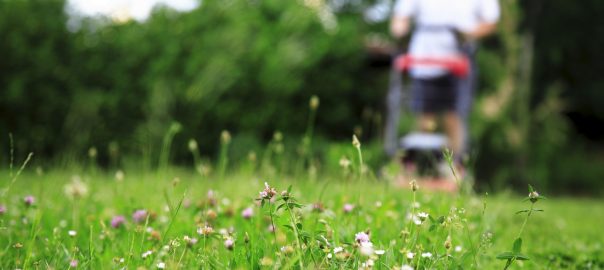
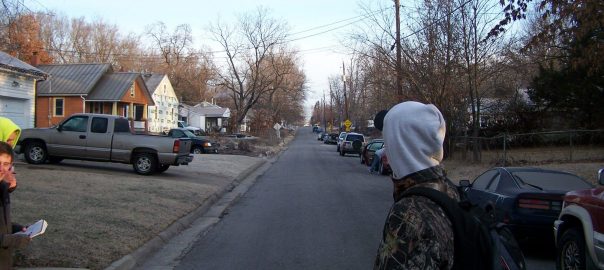

Leave a Reply